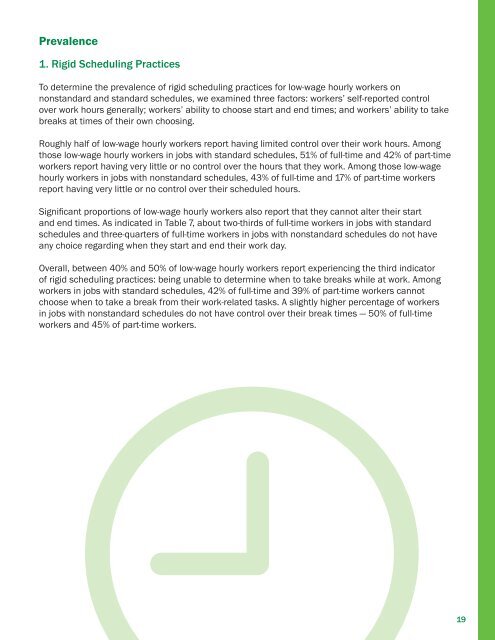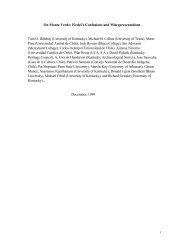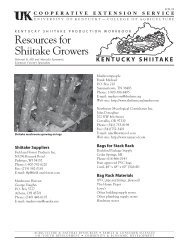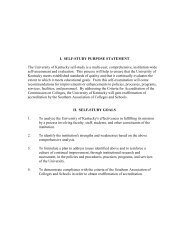Flexible Workplace Solutions for Low-Wage Hourly Workers
Flexible Workplace Solutions for Low-Wage Hourly Workers
Flexible Workplace Solutions for Low-Wage Hourly Workers
Create successful ePaper yourself
Turn your PDF publications into a flip-book with our unique Google optimized e-Paper software.
Prevalence<br />
1. Rigid Scheduling Practices<br />
To determine the prevalence of rigid scheduling practices <strong>for</strong> low-wage hourly workers on<br />
nonstandard and standard schedules, we examined three factors: workers’ self-reported control<br />
over work hours generally; workers’ ability to choose start and end times; and workers’ ability to take<br />
breaks at times of their own choosing.<br />
Roughly half of low-wage hourly workers report having limited control over their work hours. Among<br />
those low-wage hourly workers in jobs with standard schedules, 51% of full-time and 42% of part-time<br />
workers report having very little or no control over the hours that they work. Among those low-wage<br />
hourly workers in jobs with nonstandard schedules, 43% of full-time and 17% of part-time workers<br />
report having very little or no control over their scheduled hours.<br />
Signifi cant proportions of low-wage hourly workers also report that they cannot alter their start<br />
and end times. As indicated in Table 7, about two-thirds of full-time workers in jobs with standard<br />
schedules and three-quarters of full-time workers in jobs with nonstandard schedules do not have<br />
any choice regarding when they start and end their work day.<br />
Overall, between 40% and 50% of low-wage hourly workers report experiencing the third indicator<br />
of rigid scheduling practices: being unable to determine when to take breaks while at work. Among<br />
workers in jobs with standard schedules, 42% of full-time and 39% of part-time workers cannot<br />
choose when to take a break from their work-related tasks. A slightly higher percentage of workers<br />
in jobs with nonstandard schedules do not have control over their break times — 50% of full-time<br />
workers and 45% of part-time workers.<br />
19

















